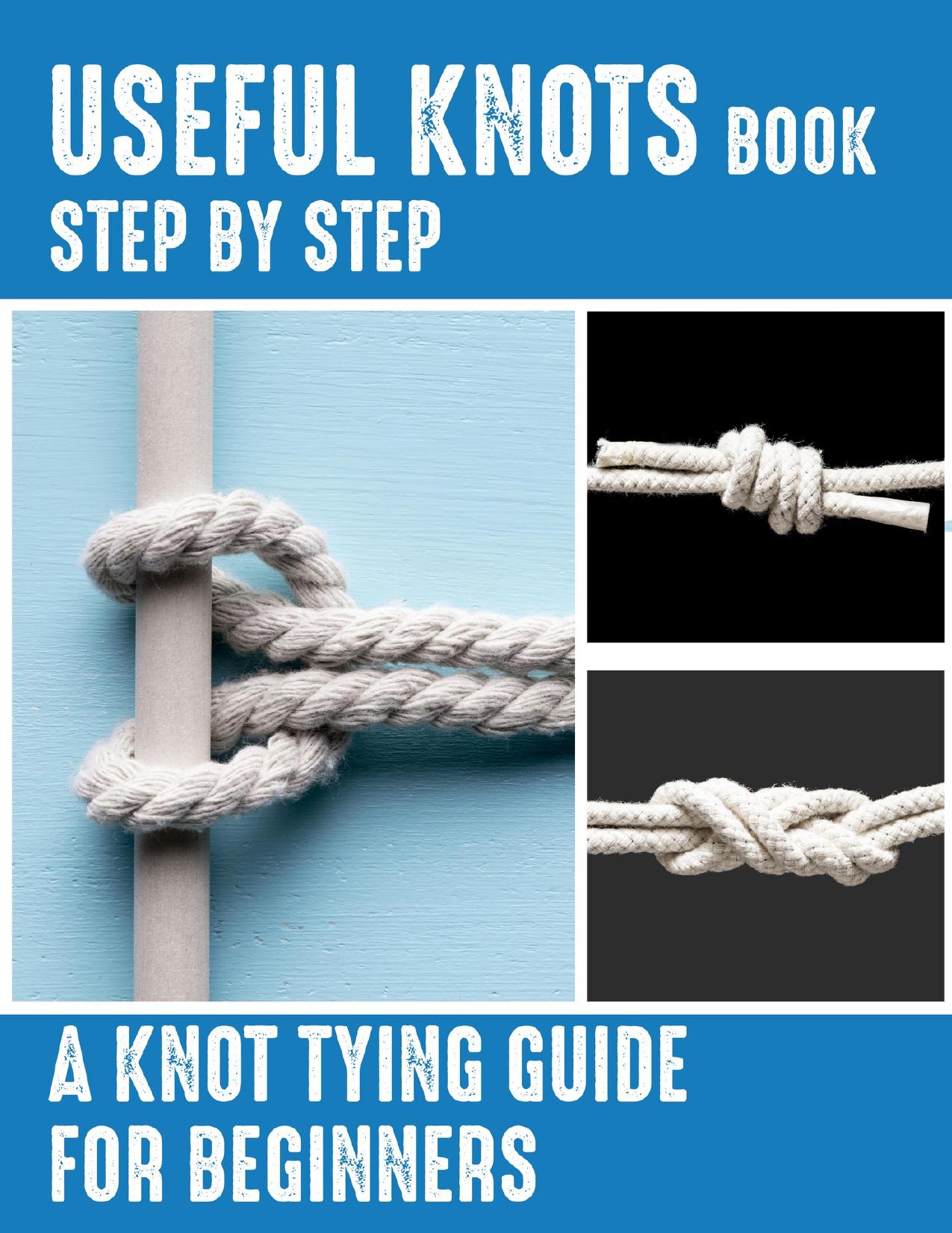Useful Knots Book: A Knot Tying Guide For Beginners, How to Tie The Most Common Rope Knots (Escape, Evasion, and Survival) by PRINTS VOVITY

Author:PRINTS, VOVITY [PRINTS, VOVITY]
Language: eng
Format: epub, pdf
Publisher: UNKNOWN
Published: 2021-01-09T00:00:00+00:00
Munter Hitch
A friction hitch commonly used by mountaineers, climbers, and of high-angle activities.
Used for :
-Rock climbing
-Caving
-Abseiling
-Rescuing by forming a part of a life-lining or belay system
-Helps de-ice the rope in frozen conditions. Munter Hitch Instructions
Tensionless Hitch
Secure way to tie off a rope to a tree or pole. Attach the end of the rope with a carabiner by using a Figure 8 Loop or a Figure 8 Follow Through Loop around the rope.
Used for :
-Rappelling
-Rescue
-Firefighting
-Climbing
Tensionless Instructions
Wrap a Rope Arround A support 4 times Create A bight With The Shorter End
Make an (8) With it Pull Both Ends To Tighten
Insert a Carabiner Knot Completed
Mooring Hitch
The mooring hitch is a simple knot that can be released quickly with just a pull at the tag end. It is more secure than the slippery hitch knot and is used in temporarily mooring boats
Used for :
-To tie up a kayak for a short time to a cleat or mooring post before getting into it.
-To secure an animal to a post.
-By lumberjacks and riggers.
Mooring Hitch Instructions
1-Wrap The Rope
Around the pole and
pass the working end 2-Form a Bigh through the gap With the end
3-Pass it through the Loop Behind The Standing Part
4-Hold and pull to 5-Knot Completed
tighten
Scaffold Hitch
The scaffold knot forms a strong loop that can be slid like a noose to fit snugly around a rail, bar, or any other object
Used for :
-It is suitable for harnesses, lifelines and Bosunâs chair as it can be pulled tight.
-The reliable knot can be attached firmly to a shackle or carabiner making it very easy and fast to handle during climbing.
-To join 2 ropes.
Scaffold Hitch Instructions
1-Wrap the tag End around the standing part of a bight of rope 2-Wrap it 2 more times in the opposite direction
3-Pass the end through the loops 4-take it out parallel to the standing part
5-Hold the loop and pull the 6-A thimble can be inserted end to tighten in the loop to protect it from
wear
Square (Reef) Knot
The square knot can join 2 ropes of the same size. It is the first knot we learn to make with our shoelaces. It looks like a bow and is hugely unreliable. Its breaking strength is only 45% of the line strength.
Used for :
-Making friendship or other bracelets and necklaces of hemp
-Camping.
-Pioneering.
-Knitting.
-Joining crochet yarn.
-In magic tricks.
Square (Reef) Instructions
1-Cross (Rope 1) and (Rope 2-Pass (Rope 2) End through 2) Ends (Rope 1) Loop 5-Pull the Ends to tighten 4-Knot Completed
Figure 9 Loop Knot
This strong knot resembles the figure 8 on a bight in appearance with one difference in the tying Process.
Used for :
-To attach a rappelling rope to a belay or anchor point.
-As an end knot in climbing.
-Caving.
Figure 9 Loop Instructions
1-Make a loop with a bight 2-Pass the end Behind The of rope loop
3-Pass it through the loop 4-Tighten by pulling the ends 5-Completed knot
Poacherâs Knot
The poacherâs knot forms an adjustable loop and is also known by the names strangle snare and double overhand noose since it is nothing but a double overhand knot around a bight of rope.
Used for :
- Making a simple snare since the loop constricts when it is loaded.
Download
Useful Knots Book: A Knot Tying Guide For Beginners, How to Tie The Most Common Rope Knots (Escape, Evasion, and Survival) by PRINTS VOVITY.pdf
This site does not store any files on its server. We only index and link to content provided by other sites. Please contact the content providers to delete copyright contents if any and email us, we'll remove relevant links or contents immediately.
On Writing A Memoir of the Craft by Stephen King(4863)
The Doodle Revolution by Sunni Brown(4688)
A Simplified Life by Emily Ley(4099)
Mummy Knew by Lisa James(3634)
Marijuana Grower's Handbook by Ed Rosenthal(3623)
Better Homes and Gardens New Cookbook by Better Homes & Gardens(3525)
Figure Drawing for Artists by Steve Huston(3382)
Paper Parties by Erin Hung(3371)
Draw Your Day by Samantha Dion Baker(3290)
The Genius of Japanese Carpentry by Azby Brown(3226)
Japanese Design by Patricia J. Graham(3110)
The Code Book by Simon Singh(3074)
Dangerous Girls by Haas Abigail(2979)
Lions and Lace by Meagan Mckinney(2925)
The Curated Closet by Anuschka Rees(2915)
How to Make Your Own Soap by Sally Hornsey(2829)
The Checklist Manifesto by Atul Gawande(2779)
The Wardrobe Wakeup by Lois Joy Johnson(2733)
Zero to Make by David Lang(2726)
